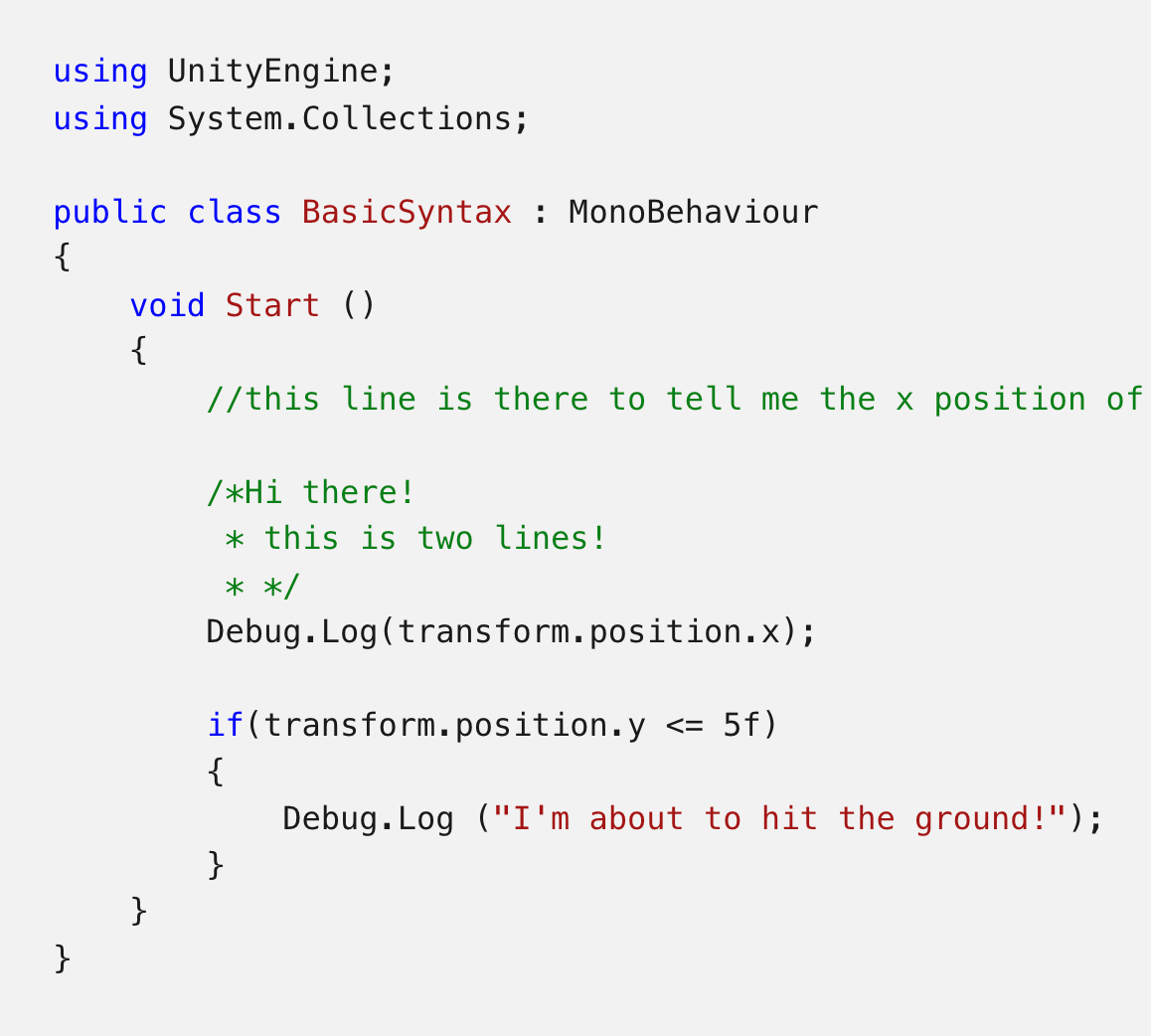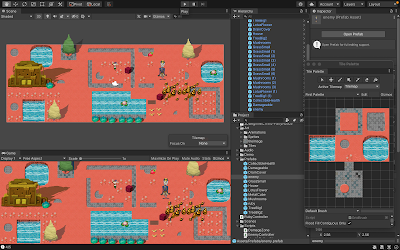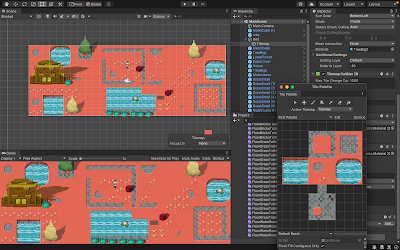Conventions and Syntax

The structure of a language is referred to as coding syntax, and some standards are necessary for learning to read and write code. I can see why the dot operator is compared to an address in the video. You may effectively separate or access elements of a compound unity with the dot operator. A compound object is one that is made up of a variety elements. Transform, for example, contains position, rotation, and scale, so the dot operator is used to select position. Semicolon is another component of syntax. It is always at the end of a line and is used to conclude statements. Indentation is important but optional in Unity coding, I found. Indentation facilitates code easier to read, and you may add one by pressing the tab key An Example of code that embeds Convention and Syntax Source: Unity




